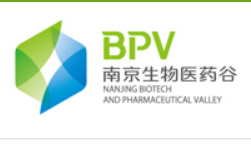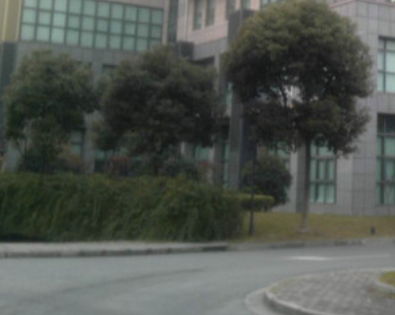▲共同第一作者:王凌翔;通讯作者:肖丰收,王亮;
通讯单位:浙江大学化学工程与生物工程学院,浙江大学化学系
论文DOI:10.1002/adma.201901905
全文速览
本文主要对近年来抗烧结金属纳米颗粒催化剂的设计和应用方面的研究进展进行了综述,总结了几种稳定金属纳米颗粒催化剂的新策略,包括金属‒载体强相互作用、氧化物或碳层包裹,介孔材料封装以及沸石分子筛晶体固定。
背景介绍
负载型金属(单位点、纳米簇和纳米颗粒)催化剂被广泛应用于的化学品、清洁能源和药物的工业生产,以及污染物消除和光催化反应等,但始终存在着因高温烧结或浸出流失而导致的失活问题。催化剂活性的再生恢复需要花费高昂的成本,将金属从载体上浸出并重新高分散负载也十分困难。因此,理解催化剂的烧结机理对设计耐久型催化剂而言非常重要。
奥斯特瓦尔德熟化( Ostwald ripening )和迁移‒合并( Migration‒coalescence process )是造成金属纳米颗粒的烧结团聚的两种机理,且有可能同时发生在催化剂的团聚过程中( Figure 1 )。对金属纳米颗粒烧结机制的理解,促使着研究者们不断开发稳定金属纳米颗粒催化剂的新策略。应用氧化物或碳层对金属纳米颗粒进行包裹,可以抑制金属烧结,但也会掩蔽部分活性位点导致催化剂活性降低。因此,具有丰富多孔结构的介孔材料被用于封装金属纳米颗粒。此外,氧化物包覆层可以引入大量的金属‒氧化物界面,也能调节催化剂的活性和选择性。
但是,想要合成具有特定结构并同时改善催化性能的催化剂依然十分困难。将金属活性组分固定在具有刚性框架和特定孔道结构的分子筛晶体中,可以同时利用金属的催化活性和分子筛的稳定性优势,微孔结构也能促进分子传质扩散并利用其择型效应。由于分子筛的拓扑结构和微孔环境可以人为调控,选择特定的金属和分子筛,能设计出一系列可以应用于不同化学反应并具有独特催化性能的催化材料。

▲Figure 1. Theoretical and experimental results for studying the metal sintering process. a,b) Reverse process and associated potential energy of detachment/attachment of a Pt adatom to Pt10/Pt11 clusters and Pt37/Pt38 clusters. c) Energy diagram of supported metal particles without and with the presence of reactants. d) Sintering behavior of Au NPs on TiO2 (101) surface.
研究出发点
一些文章已经对金属纳米颗粒烧结机理的相关研究做了总结,但很少有关于抗烧结金属纳米催化剂的制备策略的综述。本文主要着眼于制备抗烧结金属催化剂的新策略,包括金属‒载体强相互作用、氧化物或碳层包裹,介孔材料封装以及分子筛晶体固定( Scheme 1 )。重点关注催化剂的结构设计和抗烧结性能,希望能对后续的研究有一定的参考和借鉴意义。

▲Scheme 1. Diagram of new strategies for preparation of sinter-resistant metal-nanoparticle-based catalysts.
图文解析
1.金属‒载体强相互作用
Tauster 和 Fung 首次在 Pt/TiO2 上发现金属‒载体强相互作用( Strong metal‒support interactions, SMSI ),样品在还原处理后,CO 和 H2 的吸附被显著抑制,同时 TiO2 在 Pt 纳米颗粒表面形成的物理包覆层。这种包覆层能作为物理阻隔来避免金属纳米颗粒的团聚,因此提高了催化剂的稳定性( Figure 2‒7 )。
一般来说,传统的 SMSI 可以通过氧化还原处理样品而实现,且仅能发生在可还原的氧化物如 TiO2,CeO2,Nb2O5,Ta2O5 和 V2O3 上。SMSI 在不可还原的 ZnO 和磷酸盐载体的实现,突破了这一限制。即便是一般认识下的惰性载体如 Al2O3 和 SiO2 ,也能通过与金属位点的作用或是形成页硅酸盐来实现 SMSI 。不仅如此,金属碳化物( TMCx 和 MXene )也能形成 SMSI。
近期,通过非氧化还原方法处理样品同样能实现 SMSI,典型的例子有驱动载体从氢氧化物向氧化物转变,以及室温条件下的湿法 SMSI ( Wet-chemical SMSI, wcSMSI )。除此以外,可还原的氧化物载体也能利用 SMSI 的电子效应来实现对金属纳米颗粒的锚定,即便没有形成物理包覆层,也能提升催化剂的抗烧结性能。

▲Figure 2. a,b) HAADF-STEM images of Pt1/FeOx. Pt atoms (white circles) are exactly at the positions of the Fe atoms. c,d) CO oxidation and CO2 selectivity with the time-on-stream for PROX reaction (sample A, 0.17 wt% Pt1/FeOx catalyst; sample B, similar catalyst with 2.5 wt% Pt).

▲Figure 3. a,b) In situ STEM images of SMSI, a TiOx crystalline bilayer, containing exclusively Ti3+, and A-SMSI, an amorphous TiOx overlayer, containing a mixture of Ti3+and Ti4+, on the surface of Rh nanoparticles. c) CH4 and d) CO generation rates on 2% Rh with various supports after reduction or 20CO2:2H2 treatment. e) Illustration of SMSI and A-SMSI overlayer structure and behavior.

▲Figure 4. ETEM images of the Au-673 catalyst under oxidizing and reducing atmospheres at 573 K. a,b) A truncated octahedral Au particle under a 10 vol% O2/N2 and a 42 vol% CO/6 vol% O2/N2 atmosphere. c) Schematic illustration of a typical gold nanoparticle enclosed by {111} and {100} planes. d) Atomic scheme of a gold nanoparticle anchoring onto a CeO2 nanorod with different functional domains. e) Mass spectra during CO and 18O2 sequential pulses over the Au-673 catalyst at 573 K. f) Redox cycle of CeO2 involving the participation of its lattice oxygen. g) Mass spectra during CO and H2O sequential pulsed over the Au-673 catalyst at 573 K.

▲Figure 5. a) Synthetic and catalytic strategies for sinter-resistant Au/LDO catalyst with SMSI. b–d) TEM images of Au/LDO samples obtained after calcination at 400, 600, and 700 °C, respectively. e) Catalytic performance with the time-on-stream of various catalysts for CO oxidation and EtOH dehydrogenation. f) Proposed models, TEM images of g) Au/TiO2 with bare Au surface, and h) Au/TiO2-wcSMSI with TiOx overlayer on Au nanoparticle.

▲Figure 6. a) Synthesis strategy for preparing supported Au/HAP samples with SMSI. b–g) HRTEM images of Au/H-200, Au/H-300, Au/H-400, Au/H-500, Au/H-600, and Au/H-500-H2 samples. h) Time-dependent CO conversions at 100 °C on Au/HAP-500 and Au/H-200 with treatment of O2 or H2 flow. i) The catalytic performance and stability test for RWGS reaction of Au/TH-800 and RR2Ti catalysts.

▲Figure 7. a,d) SEM, b,e) Mo and c,f) Au EDX element mapping images of the Au/MoO3 and Au/MoCx samples, respectively. g) Contour map of in situ XRD patterns during the temperature-programmed carbonization treatment of Au/MoO3 sample. h) LT-WGSR activity of Au/MoO3 and Au/MoCx during the cycled calcination-carbonization treatments. i) Fourier transforms of k2-weighted R-space EXAFS spectra of the various samples.
2.氧化物或碳层包裹
氧化物或是碳层可以用于包裹金属纳米颗粒,作为相互之间的物理阻隔来避免金属团聚。应用气相前驱体制备氧化物包裹层所进行的原子层沉积( ALD )和分子层沉积( MLD )是最合适的方法,常见的氧化物包括 SiO2,TiO2,ZrO2 和 CeO2 。碳层可以通过吸附在金属表面的有机前驱体的碳化来得到。金属之间物理阻隔的存在,有效地阻止了金属纳米颗粒团聚,提升了催化剂的抗烧结性能,但也会掩蔽许多的金属活性位点( Figure 8 )。

▲Figure 8. a) Schematic illustration of the construction of dopamine-derived Au nanocatalysts with high thermal stability. BF-STEM and HAADF-STEM







